The North London derby is always a game to be marked in the calendar. Over the years goals, red-cards and controversies have littered this fixture, making it one of the most enjoyable match-ups in the Premier League season.
This season the two London clubs met under unfamiliar circumstances. Not just the absence of a crowd but the absence of Champions League football is not something either team is looking to make a habit of.
Coming into the match Tottenham have managed just two victories in five matches, and perhaps more concerningly, performances have looked well below that required to meet the top-four standard. Frustrations and murmurs have already begun about José Mourinho’s attacking fluidity; a victory on this afternoon was a must. Defeat to bitter rivals is almost unforgivable.
Despite an obvious lack of creative freedom displayed by both teams, an exciting game was eventually won by Tottenham who came from behind to take three points.
In this tactical analysis, we look at the tactics used by booths side, in particular focusing on the difference between the two managerial philosophies.
Line ups
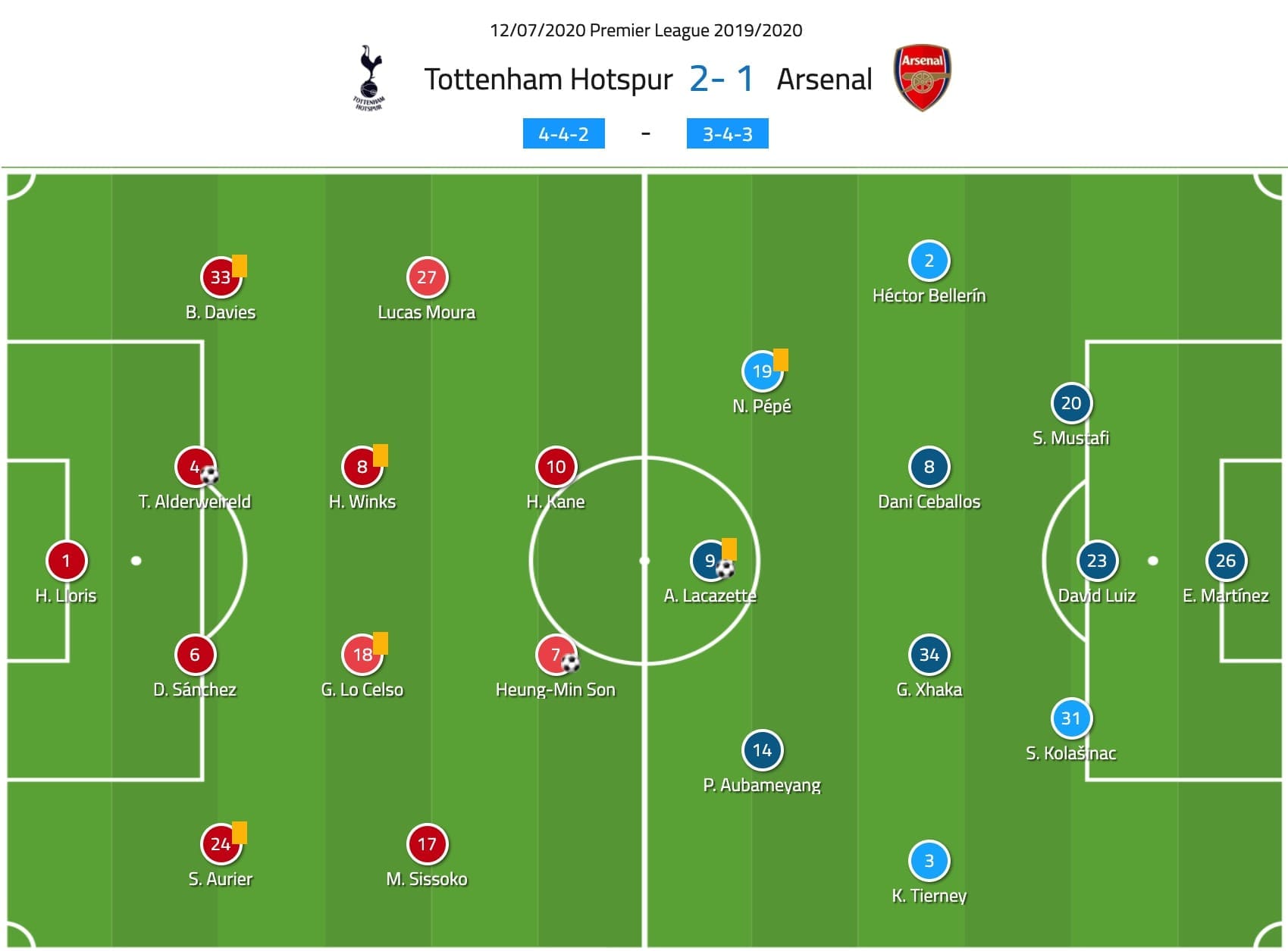
The home side started in an unfamiliar 4-4-2 shape. This is a system they’ve used for just 203 minutes of league football and average an xG90 of 0.82 whilst using it. A familiar back four included Ben Davies and Serge Aurier at full-back. The pair were given the license to attack, moving forward to support their wide midfielder during the attacking development. Harry Winks and Giovani Lo Celso partnered in midfield where they operated as a double pivot, coming short to regurgitate the ball in possession cycles. Moussa Sissoko and Lucas Moura were deployed as the wide midfielders.
This role looked to suit Moura better, as he could use his pace and dribbling to move out of the lateral spaces inside to seek passing lanes into the front players. Sissoko struggled with the unfamiliar positioning as his technical ability didn’t suit the tight spaces where intricate passing combinations were required. Harry Kane and Heung Min-Son started up front, where Kane was looking to end his three-game mini goal drought.
For Mikel Arteta, it was same again following the draw against Leicester. The Spaniard remained with a fluid 3-4-3 system that transitioned to a 3-2-5 or 5-4-1 depending on the phase of play. Kieran Tierney and Héctor Bellerín started as the wing-backs, where they looked to push as high as possible when in possession, providing width as well as stretching the Tottenham shape laterally.
Dani Ceballos and Granit Xhaka were the double-pivot in midfield. The paid dropped deep as Arsenal looked to funnel passes into the loanee midfielder, who could then use his extensive range of passing to dictate the tempo. Xhaka was also useful with mid-range switches of play as Arsenal developed attacks in the wide spaces. Alex Lacazette, Pierre-Emerick Aubameyang and Nicolas Pépé adopted a narrow front three position, which we look at in closer detail later.
A traditional approach
Football formations have become so dynamic over the years that a simple 4-4-2 has often been labelled as too rigid or inflexible, far inferior to the modern approach. Typical then that Mourinho asked his Spurs side to adopt such a formation when backs are to the wall.
Despite its critics, in its simplicity, the formation offers a fundamental defensive structure from which attacks can be resisted and counter-attacks conjured – fitting perfectly into Mourinho’s philosophy.
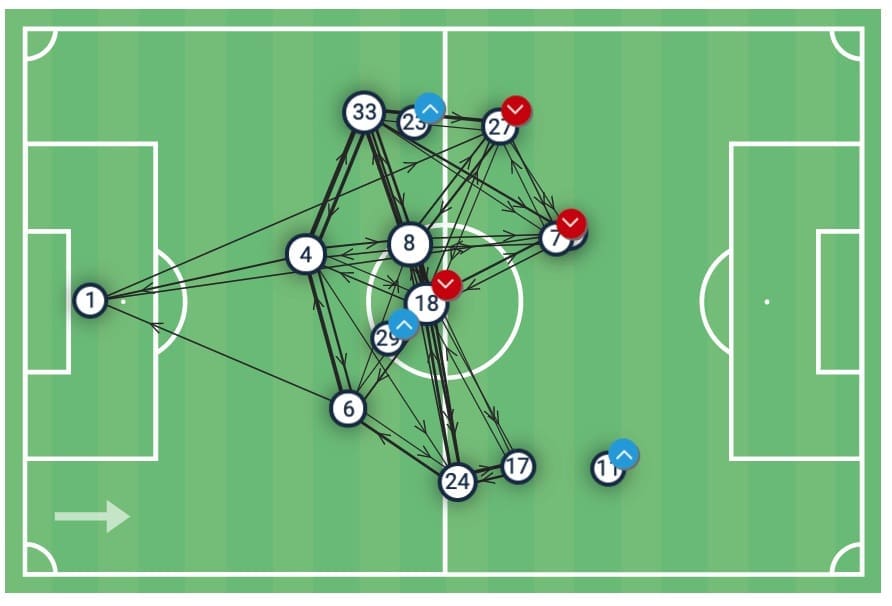
We can see above from their pass map that Tottenham adopted a clear, rigid tactical plan that started with two banks of four when Arsenal were developing attacks. Instead of pressing their opponents tirelessly, Tottenham operated from a mid/low block, where they achieved a PPDA of 19.65 – their highest this season. This stat and the average positions above shows us that Tottenham were wary of the counter-threat Arsenal posed and as a result preferred defensive containment over aggressive pressing. We can also see that Tottenham tried to avoid dangerous passes directly into the double-pivots, instead using the full-back to feed the ball into the playmakers.
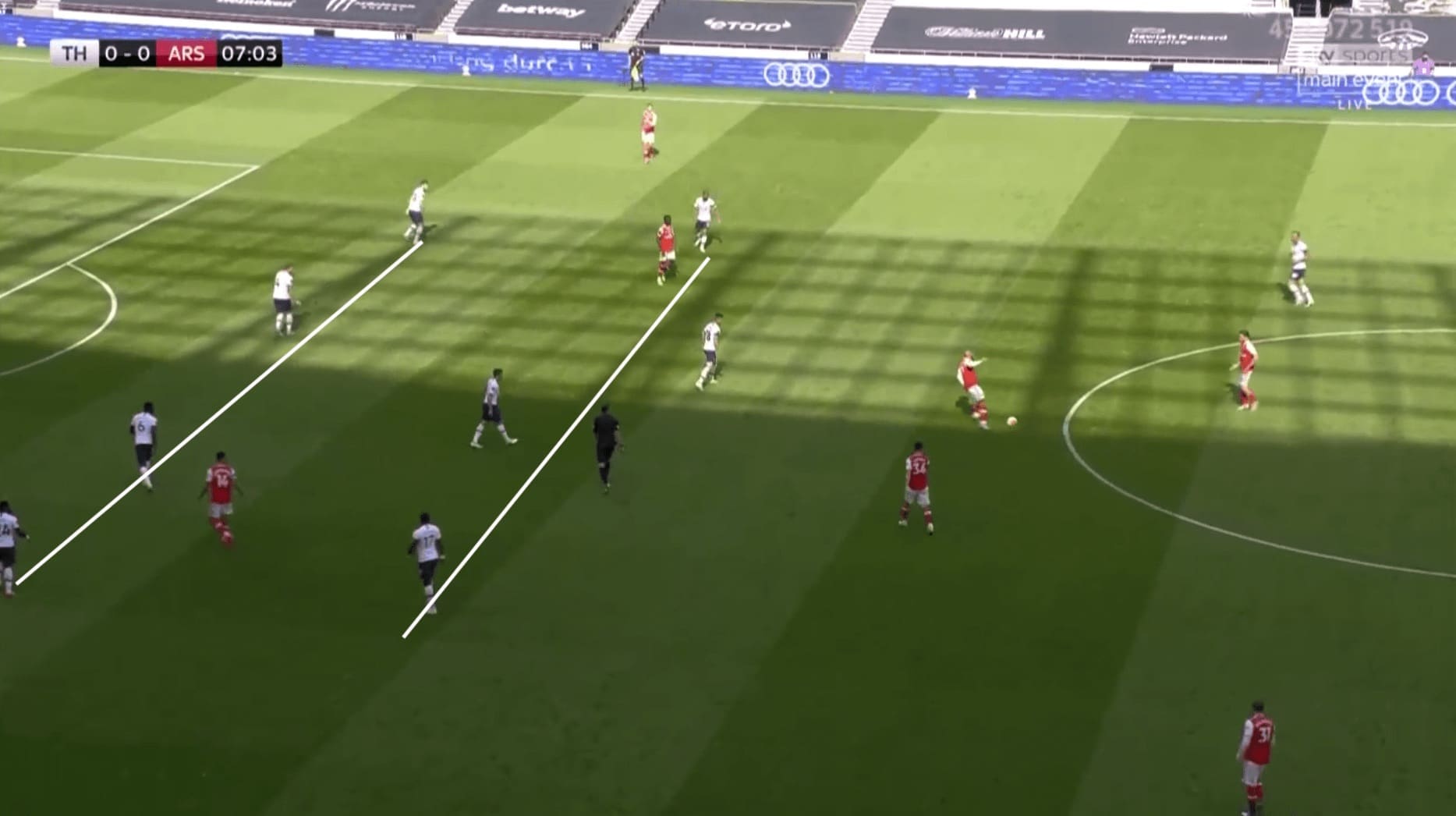
In possession Spurs were slow too with their tempo, splitting the centre-backs from goals kicks and playing short passes through each phase of the pitch. This slow tempo kept them in control of their shape, allowing them to methodically progress up the pitch whilst protecting against any counter threats. Winks and Lo Celso marshalled the middle of the pitch, the pair collected the ball from their centre-backs or full-backs and attempted to play forward from this point. Problems arose however when they were forced to come too deep to collect the pass, as it isolated Kane and Son, which is evident in the visual above.
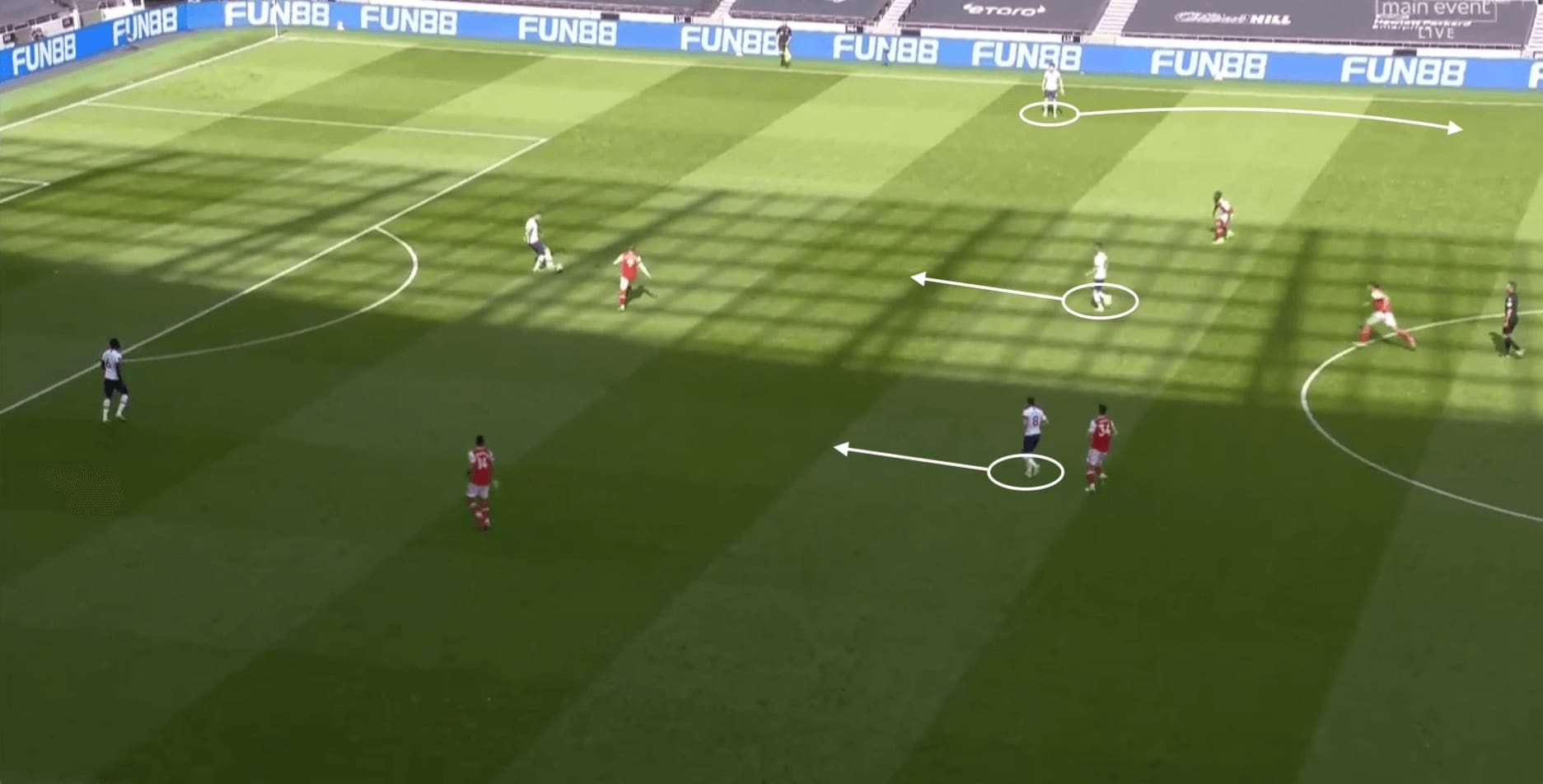
This tactic sacrificed possession, as Tottenham averaged just 37% across the 90 minutes. It also meant that instead of playing riskier shorter passing into midfield, like the one shown above, Spurs often looked longer, looking for Kane and Son directly. The home side played 49 long balls compared to Arsenal’s 27, achieving an average of 61.22%. This meant there were plenty of broken-down attacks in the Tottenham build-up phase, in total just 20% of positional attacks ended with a shot at goal.
Despite the scratchiness of the game, it was a stunner from Lacazette that put Arsenal in front, heaping pressure on the attacking ability of the home side.
A blunt away day
Arteta’s philosophy is starkly different to his counterpart, Mourinho. The Spaniard is getting his side to play short passing football at home or away, whilst attempting to keep their defensive stability in the process.
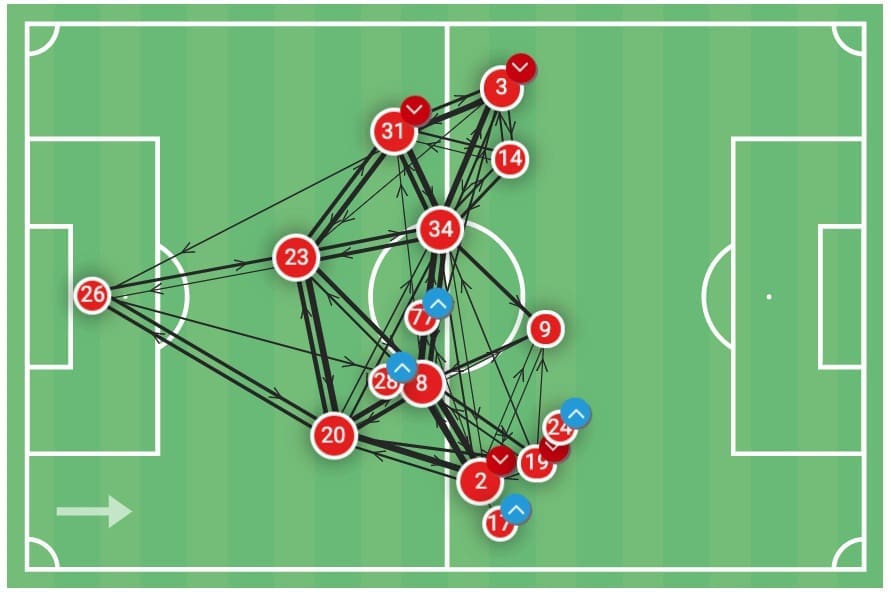
In possession, Arsenal made heavy use of their centre-backs, who we can see were very well connected. David Luiz took up the middle position allowing Sead Kolašinac and Shkodran Mustafi to move wide when Arsenal had controlled possession. This allowed the wing-backs to advance liberally, as they were hinged by the double pivot of Xhaka and Ceballos.
We can see above the wide men were amongst the most advanced. Once the passing channels had been opened into midfield using possession cycles across the back three, Arsenal looked to either play longer passes into the advancing wing-backs, or thread passes into the front three who all dropped deep in this match to help knit attacks together.

Whilst being a very good tactic to dominate the ball and control the tempo, Arsenal struggled to create chances because of their lack of penetration. Looking at the picture above we can see firstly how narrow the front three (red) are. This narrowness creates space for the wing-backs to attack, which they oblige. Notice, however, the space between each of the Arsenal attackers and their respective marker.
By dropping off slightly, the Arsenal attackers could dart into open midfield passing channels to link the play when Xhaka and Ceballos were marked. As a direct consequence, however, Arsenal lost all threat in behind, which for a team with the pace they have, is a major blow. Too rarely did Arsenal look to stretch the vertical lines of Tottenham’s structure, instead preferring to control the ball tempo and keep possession. As a result, the visitors achieved an xG of just 0.83, way below their 1.53 average.
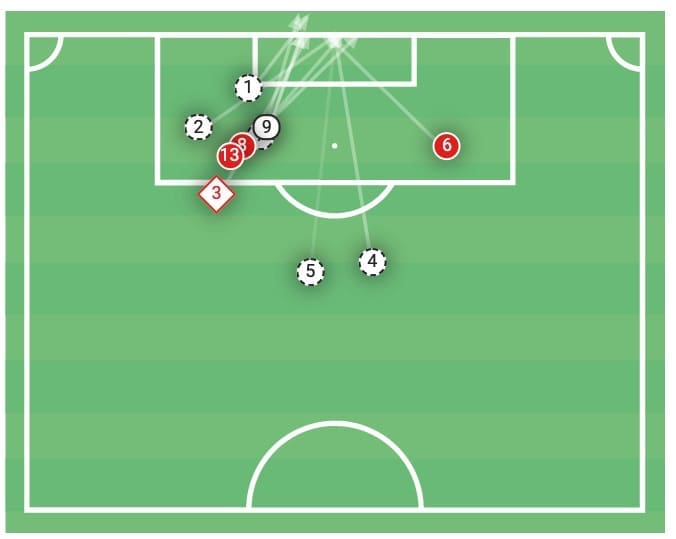
We can see from their shot map that a combination of resolute defending by Spurs and a lack of penetrating movement offered by Arsenal’s strikers reduced the Gunners to low-quality chances from range or obscure angles.
Out of possession, the Gunners were more aggressive than their opponents, averaging a PPDA of 11.12. Arteta’s men set up in a mid-block when Tottenham had controlled possession and used pressing triggers to attempt dangerous recoveries. This is shown below.
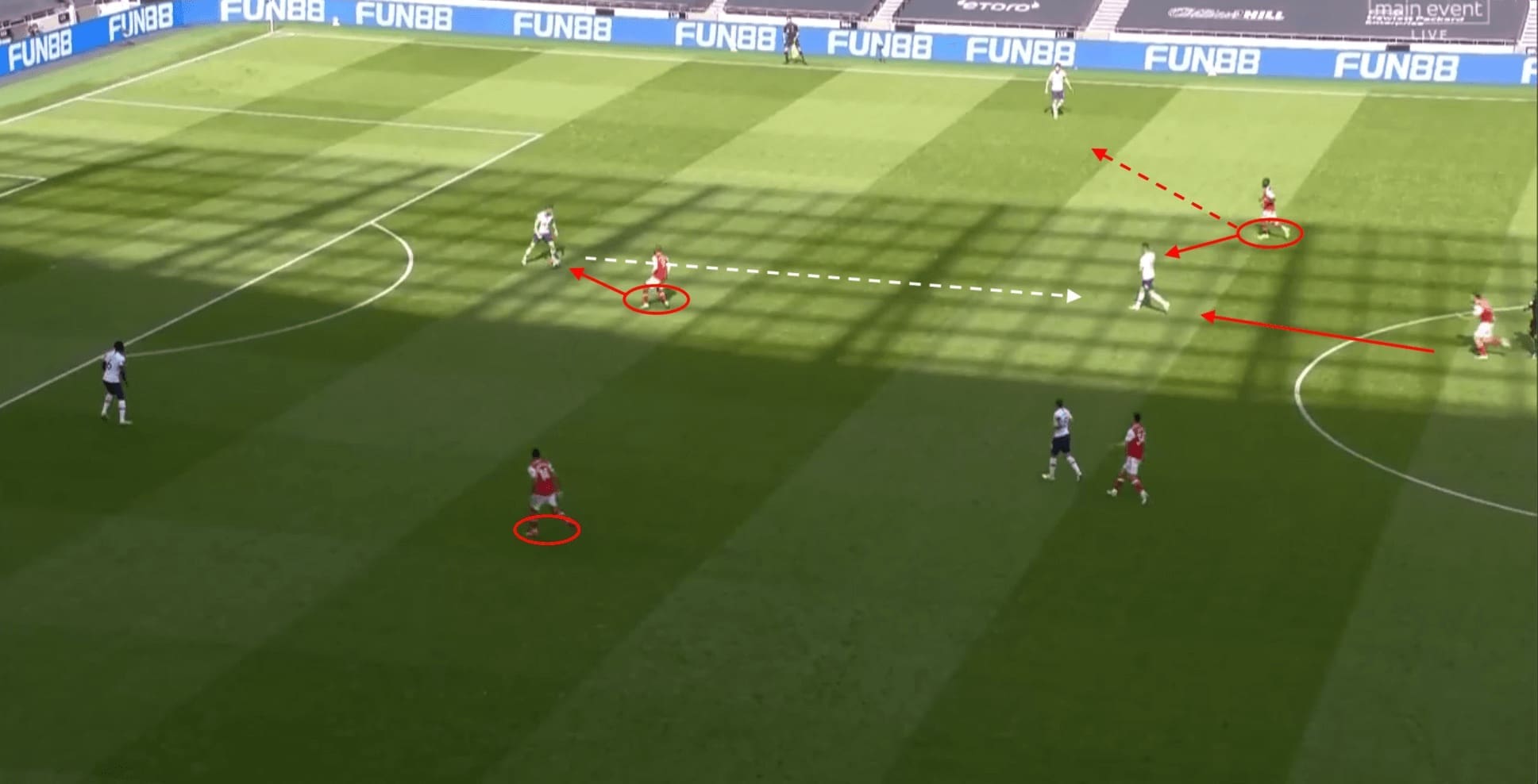
Above, as Tottenham build-up, Arsenal begin manipulating their defensive structure to entrap their opponents. The press is led by Lacazette who puts pressure on the ball-player. Aubameyang and Xhaka move up tight on the ball-players right-hand side, forcing him to look left or central. Ceballos holds a deeper position to invite the pass into Lo Celso, where Pépé has also held his position on the full-back.
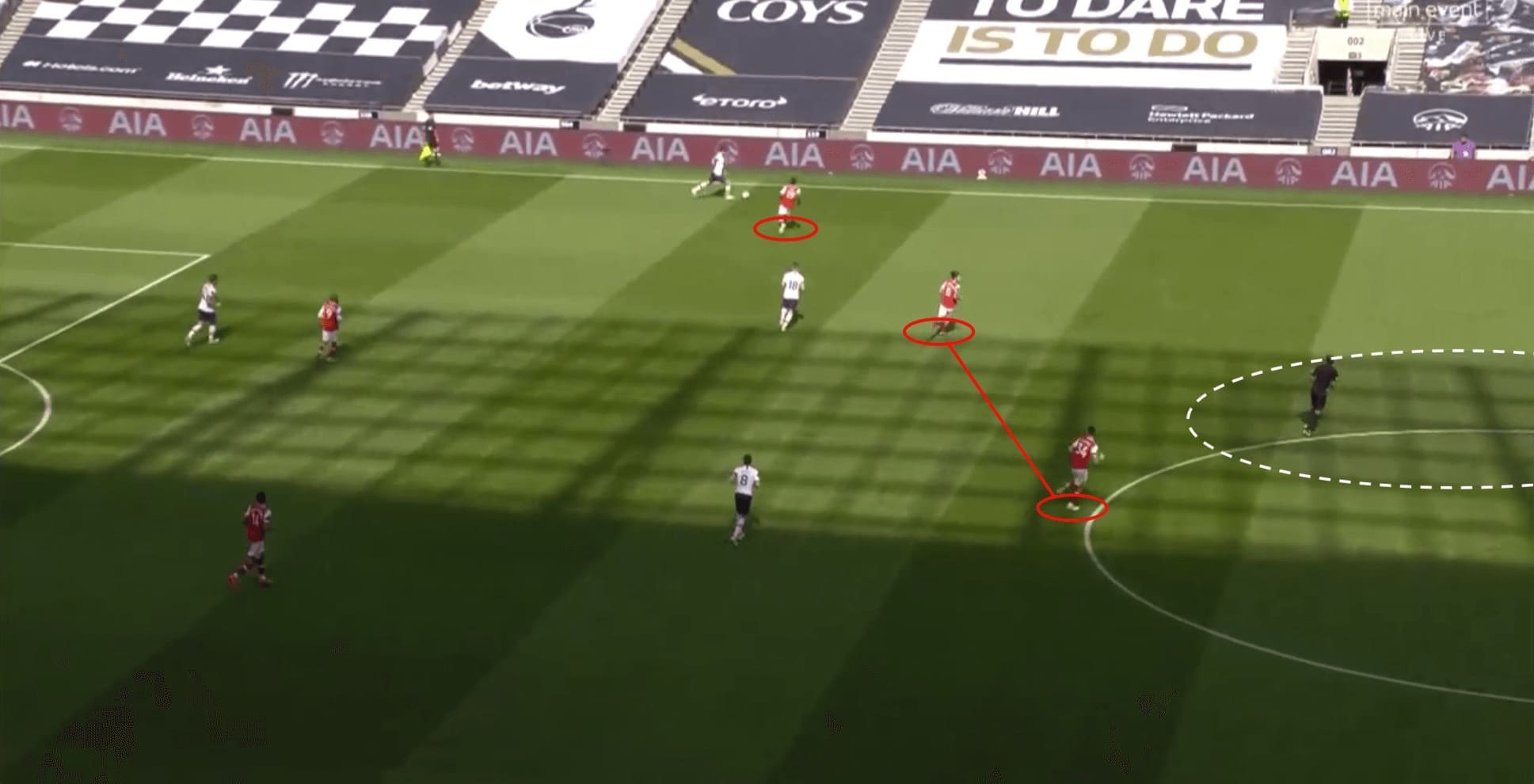
The ball gets funnelled to the right full-backs all thanks to Arsenal’s pressing tactics. Once the trigger pass is played into the midfielder, Ceballos presses aggressively and Pépé anticipates the only open channel into the full-back. This squeezes Tottenham against the touchline and forces them to either play another risky pass or play a longer pass.
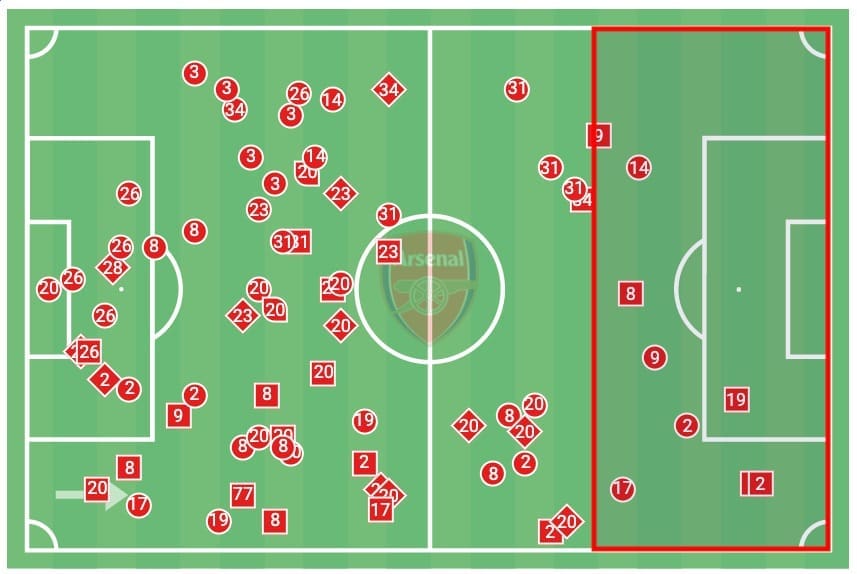
The analysis above shows that as a result of their pressing triggers, Arsenal made some important high recoveries, one of which led to the opportunity for Lacazette to fire home.
In the end, it wasn’t tactics that let Arsenal down, despite their lack of attacking prowess as we’ve discussed, the Gunners offered up more defensive mistakes letting their opponents back in the match cheaply. A late Toby Alderwiereld header sealed their fate as Arsenal left empty-handed.
Final Thoughts
This isn’t a match that will be talked about for years to come, instead, it was a signal that both teams are not yet where they want to be in terms of quality. Arsenal are improving, there is no denying they have more structure and now an obvious philosophy under their new manager. The quicker they can cut out individual mistakes and take a few more risks offensively, the more chance they have of seriously competing for a Champions League place once again.
Mourinho works in the business of results, and this is a big one for him and his side. Shuffled formations and differing personnel is an indication the Portuguese manager is still unsure of his best XI. Tottenham are still a solid side and will continue to be under Mourinho, however, the age-old conundrum of style vs results is bound to rear its head once again if Tottenham continue to struggle to score goals freely.

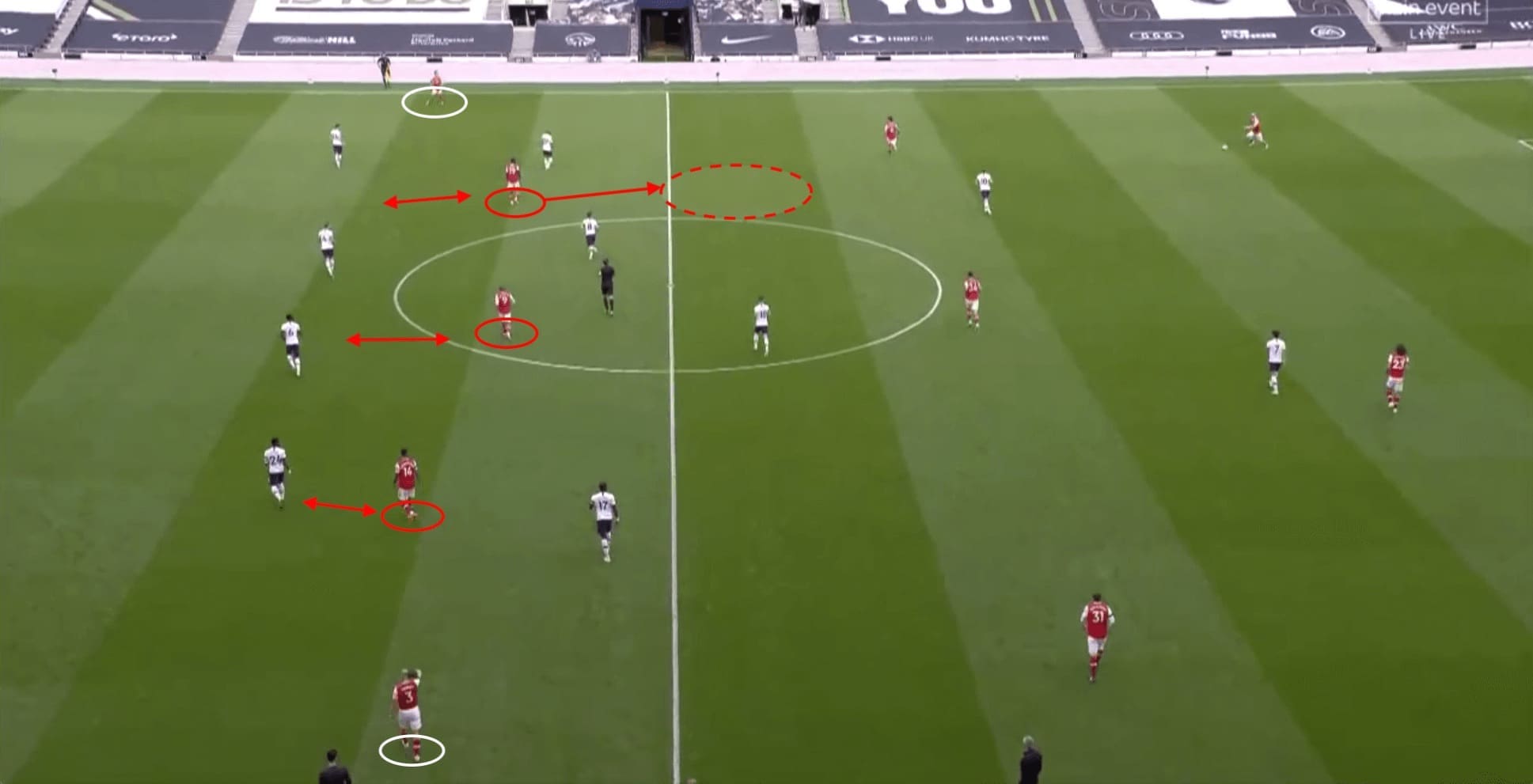



Comments